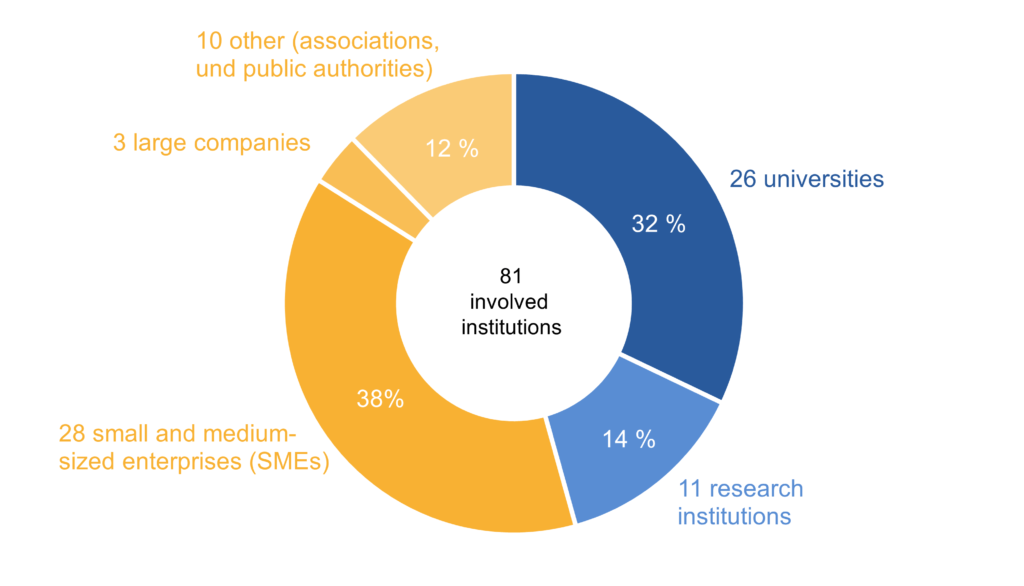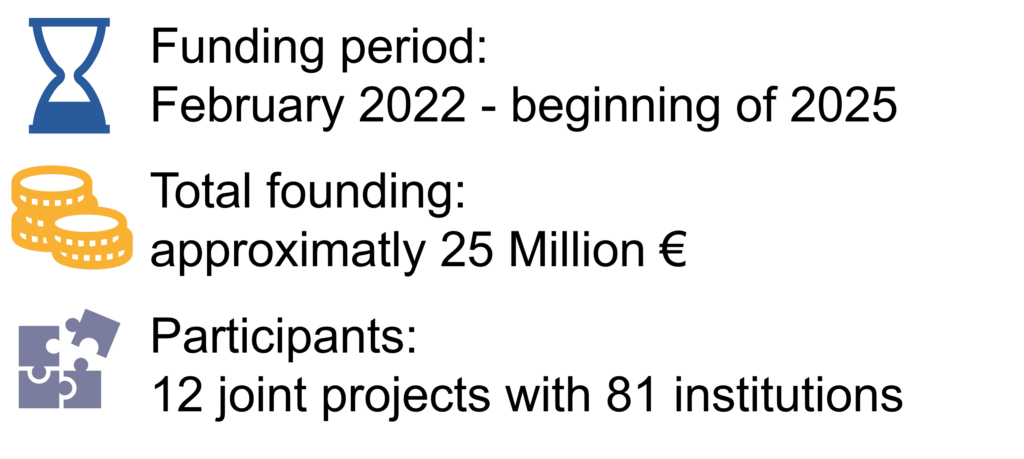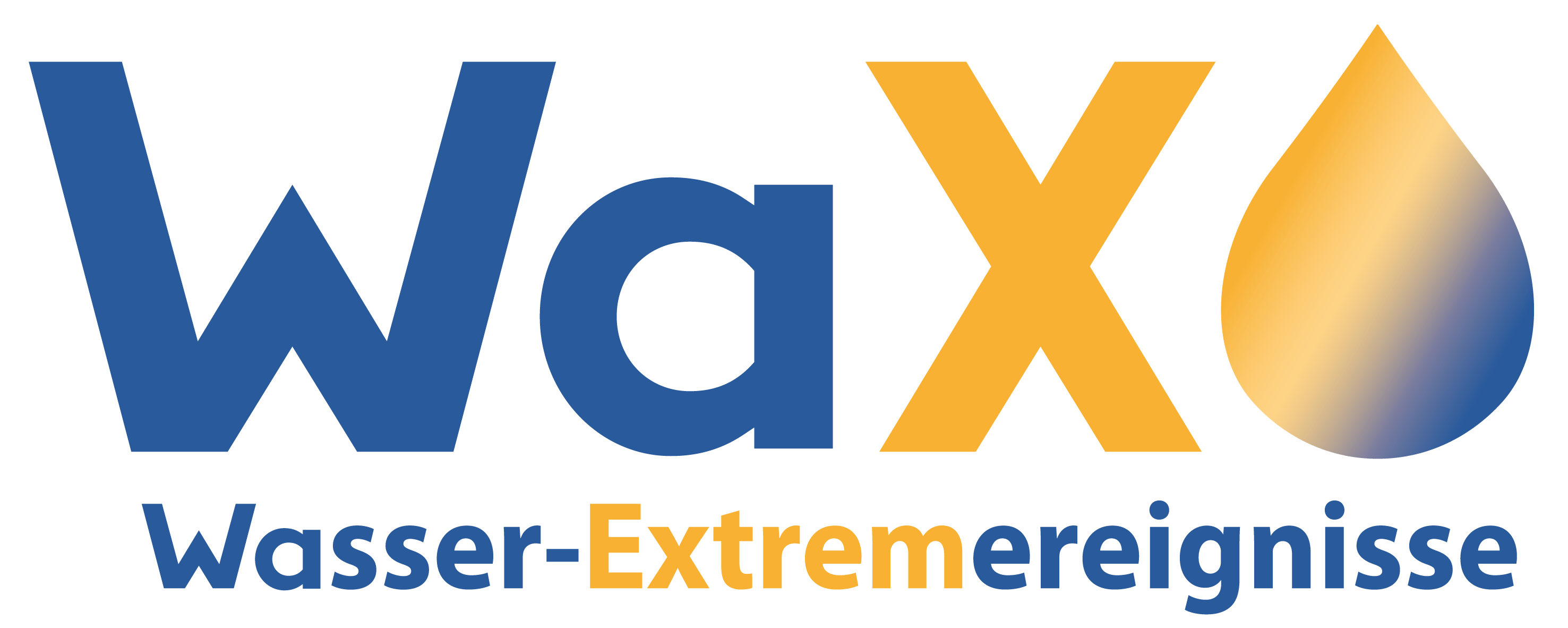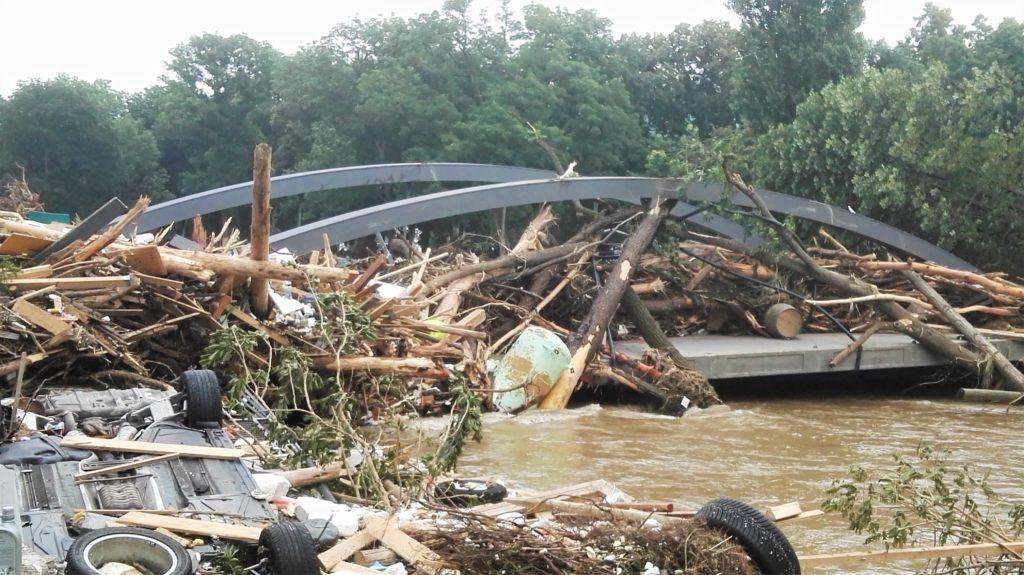Background and objective
Background
In recent years, hydrological extreme events have increasingly gained attention in Germany. After three consecutive drought summers 2018-2020, devastating heavy rainfall events occurred in large parts of western Germany in July 2021, resulting in the largest and deadliest flood disaster in the last 60 years.
Successive drought years in 2018, 2019 and 2020 with extreme heat and drought resulted in drastic water deficits in the overall soil, yield losses in large parts of Germany and even occasionally collapses of drinking water supplies (1). The Federal Environment Agency’s 2019 monitoring report estimated 770 million euros drought damage in 2018 alone (2). Groundwater levels and river water levels dropped, inland waterway vessels were unable to fully utilise their loading capacity and industrial sites had to curtail production due to supply bottlenecks (3).
In the summer of 2021, on the other hand, the deep depression “Bernd” brought heavy precipitation of up to 200 l/m² in some places to western Germany and parts of Belgium and the Netherlands. Flash floods occurred and smaller, medium and larger rivers such as the Ahr, the Emscher and the Erft bursted their banks. In addition to the rainfall, the dense development, the orography and the saturated soils led to a potentiation of the damage effect. 180 people in Germany lost their lives. Buildings and basic infrastructure were damaged. The damage value is estimated at 15 billion euros (4).
How can cities and communities better prepare for heavy rain, floods and droughts in the future? As part of its “Research for Sustainability (FONA)” strategy, the BMBF has produced a video that provides a brief overview of possible solutions.
According to a data analysis of the European Environment Agency (EEA) from 1980 – 2020, Germany is one of the countries in the European Union that is most affected by weather and climate-related extreme events, along with France and Italy (5). In the course of climate change, an increase in frequency and intensity of weather extremes is expected in many regions of Germany – especially for hydro-meteorological extremes such as heavy rain, floods and droughts (6,7). This highlights the need for practice-oriented research that improves the overall risk management of water extremes as well as their prediction and early warning.
Against this background, the Federal Ministry of Education and Research (BMBF) has launched the funding measure “Hydrological extreme events (WaX)”.
Objectives and content
The aim of the funding measure is to prevent the adverse consequences of droughts, heavy rainfall and floods through improved management strategies and adaptation measures. Innovative monitoring, forecasting and communication concepts, adapted water infrastructures as well as operational and risk management strategies for dealing with opposing hydrological extremes are being developed.
The research focuses on the following topics:
- Digital tools for monitoring, analysis, prediction and communication
- Risk management of opposing hydrological extremes
- Urban extreme water events
The research networks are working on e. g. securing drinking water supplies, adapting urban water infrastructures (drainage infrastructure, blue-green infrastructure), increasing the hydrological and ecological resilience of watercourses, developing risk management concepts for low water levels as well as for urban heavy rainfall and flood events and adapting flood protection.


Through interdisciplinary exchange, practice transfer and target group-oriented communication, the scientific findings can support political, economic as well as social decision makers. Overall, the improved risk management of water-related extreme events makes an important contribution to achieving the UN Sustainable Development Goals “Clean Water and Sanitation” (SDG 6), “Sustainable Cities and Communities” (SDG 11) and “Climate Action” (SDG 13).
The WaX funding measure is part of the federal programme “Water: N – Research and Innovation for Sustainability”, which is part of the BMBF strategy “Research for Sustainability (FONA)”.


